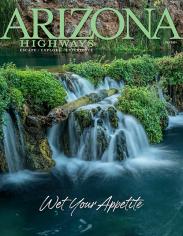Photographing Night Skies
As you’ll see in this portfolio, there are several ways to photograph stars, planets and the Milky Way. Some of the images are a single exposure, others are a stitched panorama of multiple exposures, and still others are the result of using stacking software to compensate for noise and grain. Whatever your technique, night sky photography experts recommend you take into account the limitations of your equipment. For example, the shorter the focal length, the longer and brighter the shot, and using a faster lens and a lower ISO will result in less noise. Do your scouting in the daytime so you can pay attention to foregrounds and overall composition, and because the Milky Way and other features of the night sky are seasonal, software such as PhotoPills can be helpful in timing your shoot. Post-processing is crucial, too, and you should plan on spending a lot of time shooting and editing — in other words, pick a night when you don’t have any obligations the next day. With practice, you can create your own stunning nighttime images.
— Rick Burress and Mike Sanchez, photographers
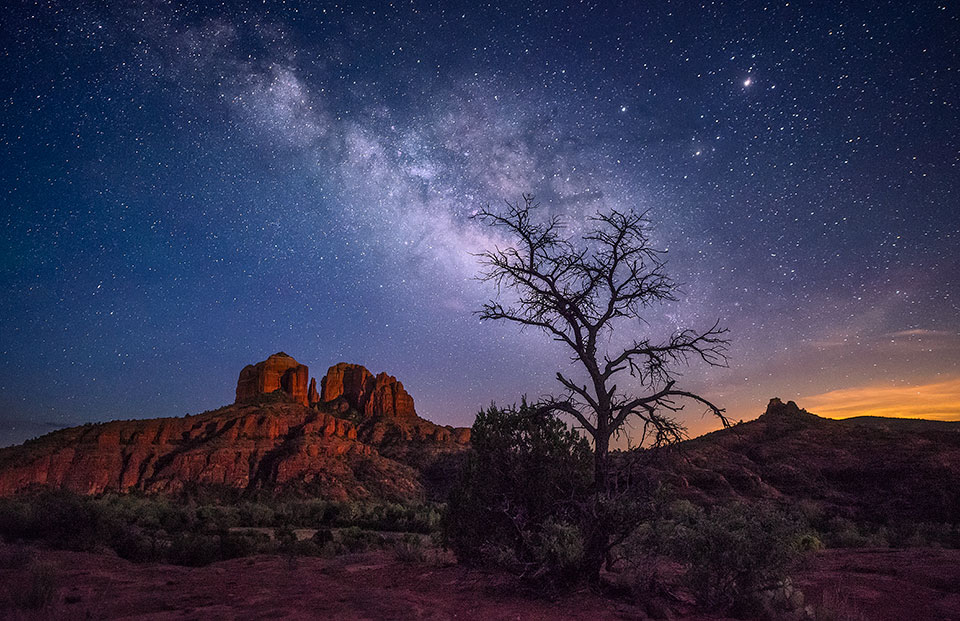
A leafless tree obscures part of the Milky Way over Cathedral Rock, the best-known sandstone landmark in the Sedona area. The Milky Way is believed to contain as many as 400 billion stars and at least that many planets.
Shane McDermott
NIKON D800E, 20 SEC, F/2.8, ISO 5000, 21 MM LENS
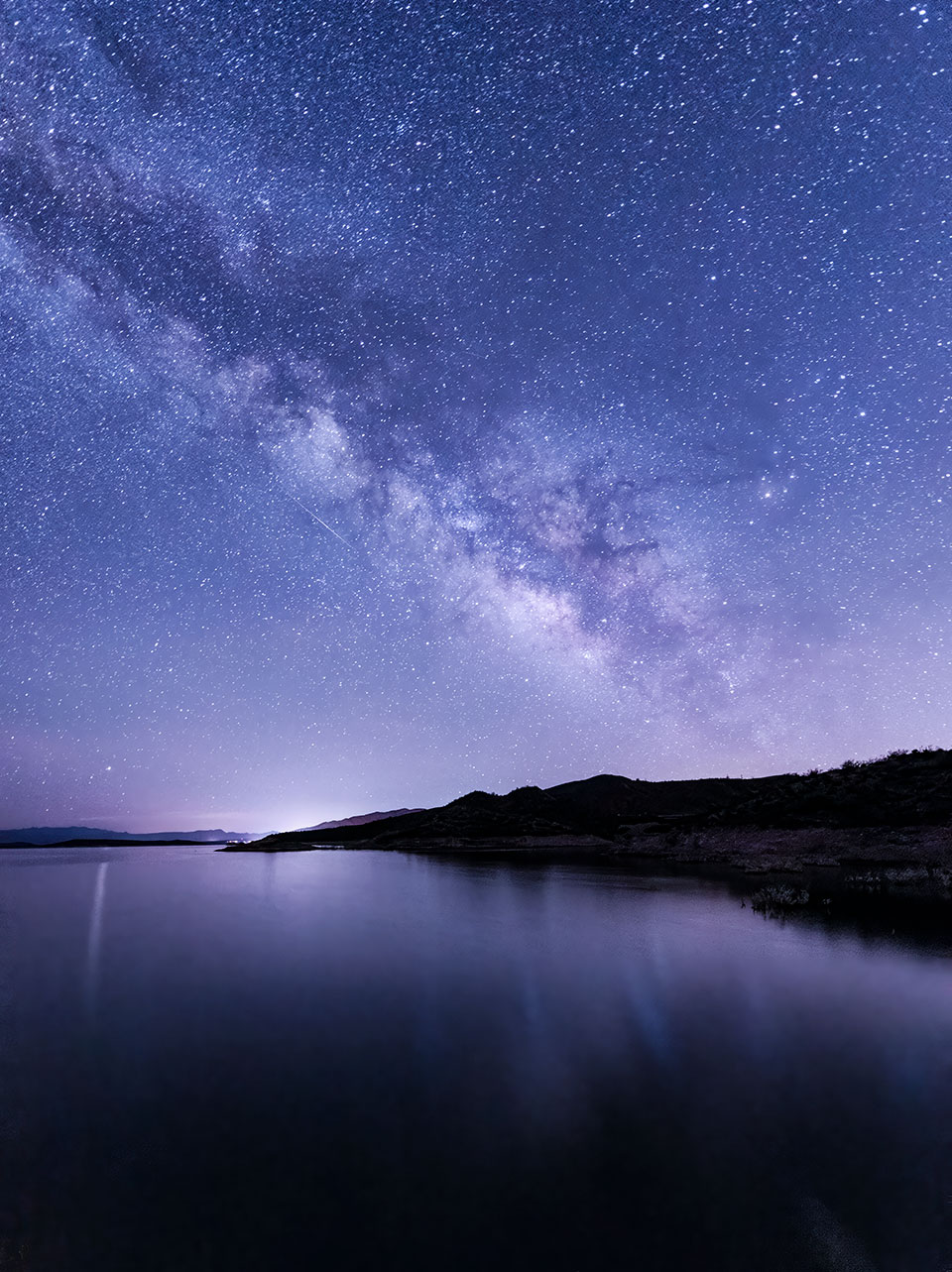
A meteor from the Lyrids meteor shower streaks through a starry sky over Theodore Roosevelt Lake, east of Phoenix. Typically, the Lyrids, caused by dust particles from a comet, occur from mid- to late April, peaking around April 22.
Doug Koepsel
NIKON D810, 30 SEC, F/2.8, ISO 5000, 14 MM LENS
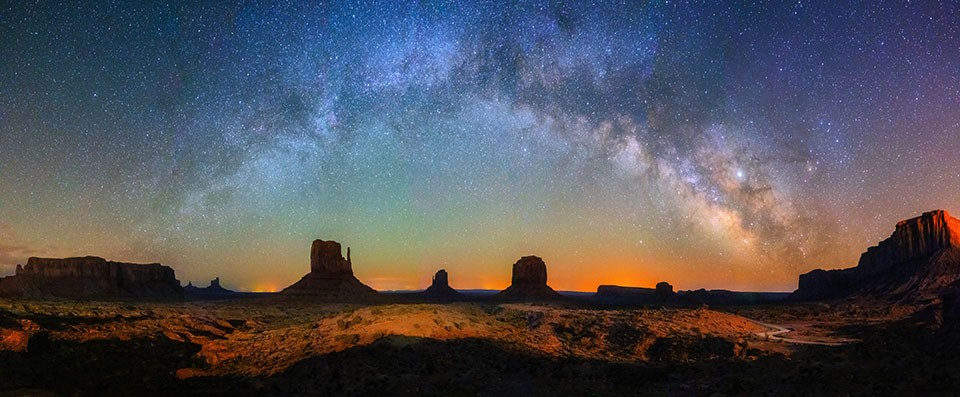
The Mittens and Merrick Butte reach for the stars at Monument Valley Navajo Tribal Park, which straddles Arizona’s state line with Utah. According to Navajo mythology, the mischievous Coyote created the Milky Way by impatiently tossing stars into the sky.
Sean Parker
NIKON D850, 15 SEC, F/2.8, ISO 6400, 14-24 MM LENS, MULTIPLE IMAGES STITCHED
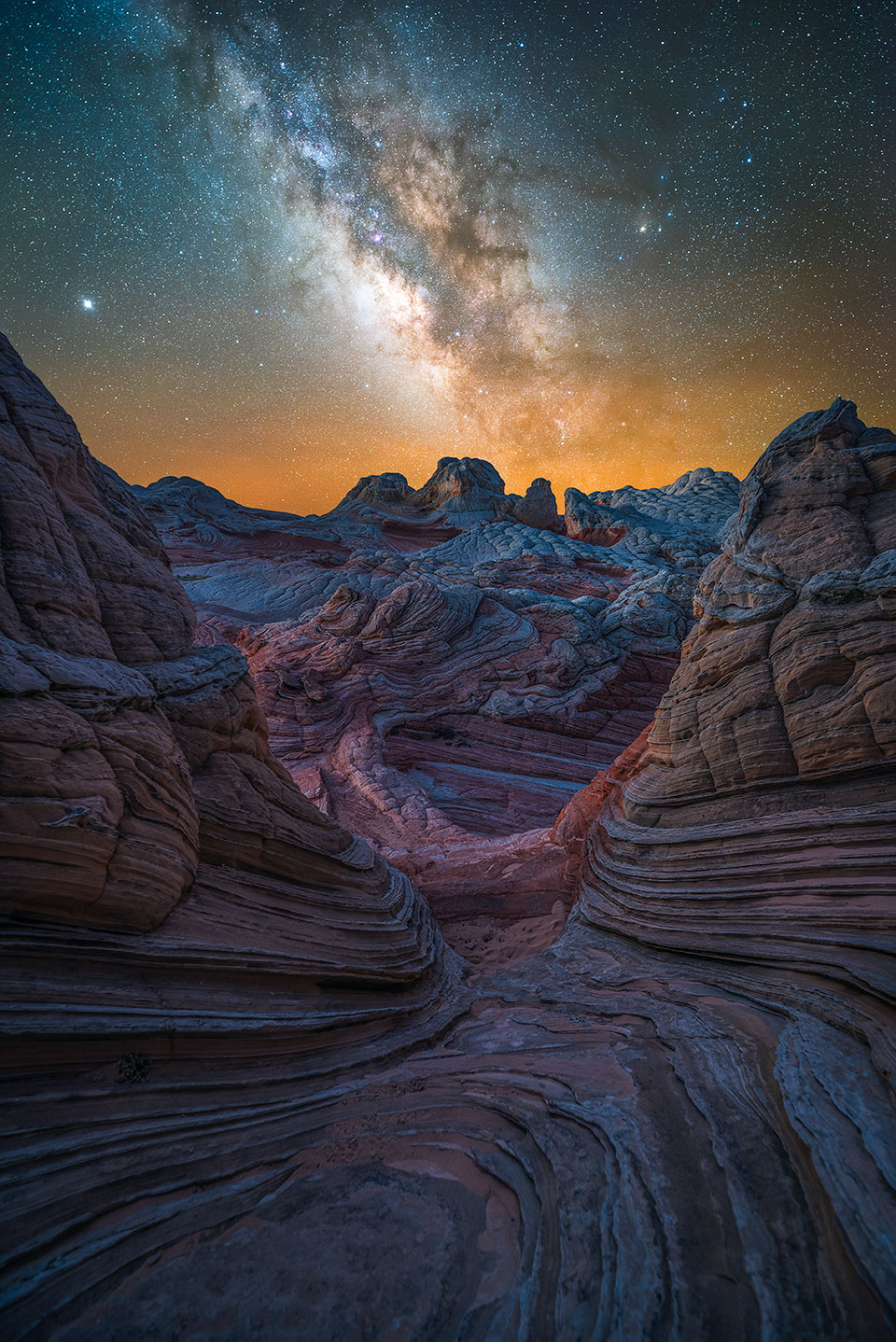
Starlight illuminates the strangely textured rocks of White Pocket, a remote destination on the Arizona Strip. The orange glow on the horizon is light pollution from cities far to the south.
Mike Sanchez
SKY: NIKON D750, 13 SEC, F/3.5, ISO 25600, 14 MM LENS, 15 EXPOSURES STACKED; LANDSCAPE: NIKON D750, 30 SEC, F/8, ISO 100, 14 MM LENS, SINGLE EXPOSURE
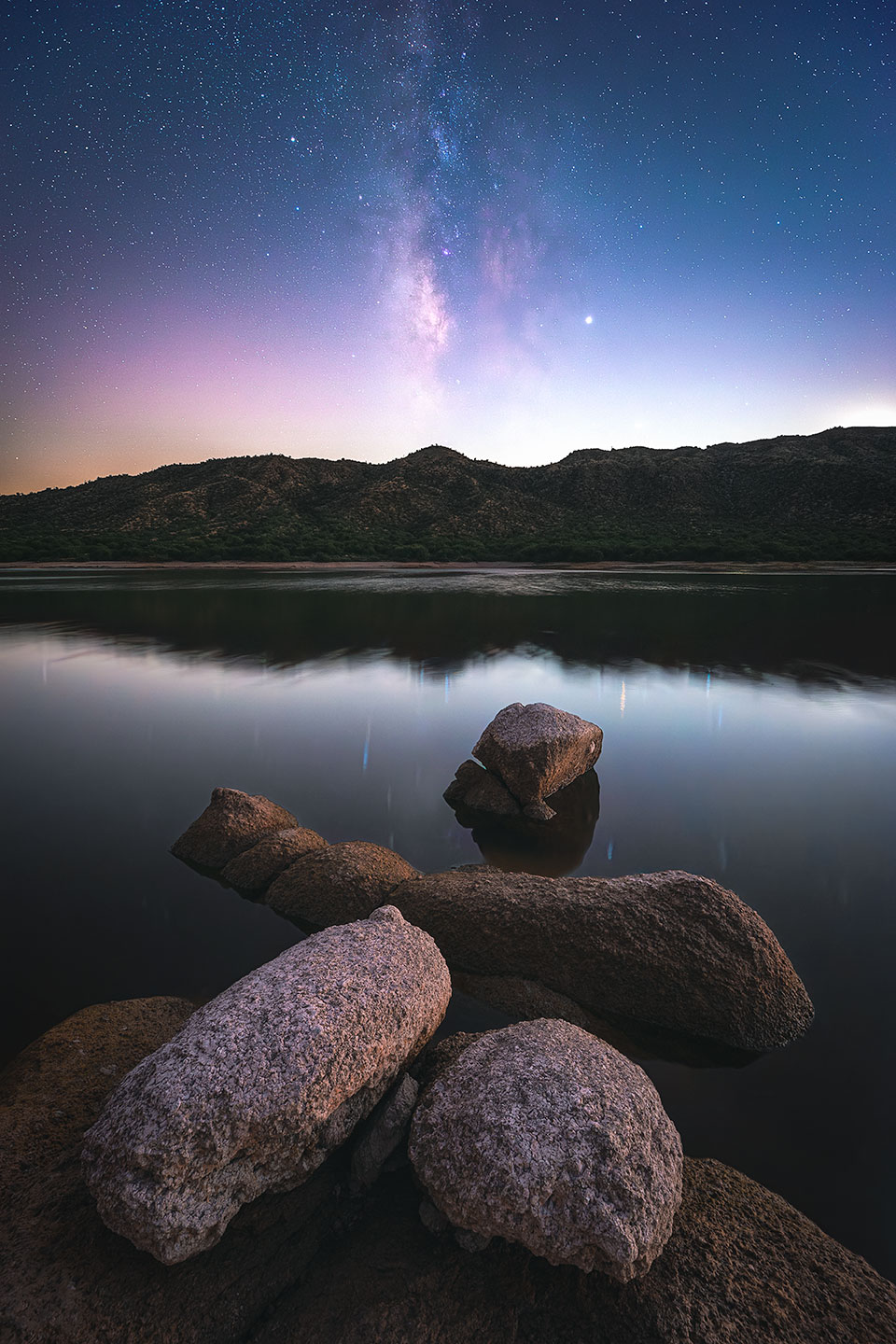
A cluster of granite boulders anchors a nighttime view from Bartlett Lake, a reservoir northeast of the Phoenix area. The faintness of the stars and the Milky Way is a result of light pollution from Phoenix.
Mike Sanchez
SKY AND WATER: NIKON D750, 10 SEC, F/3.5, ISO 10000, 15 MM LENS, 15 EXPOSURES STACKED; MOUNTAIN AND BOULDERS: NIKON D750, 30 SEC, F/11, ISO 100, 15 MM LENS, SINGLE EXPOSURE
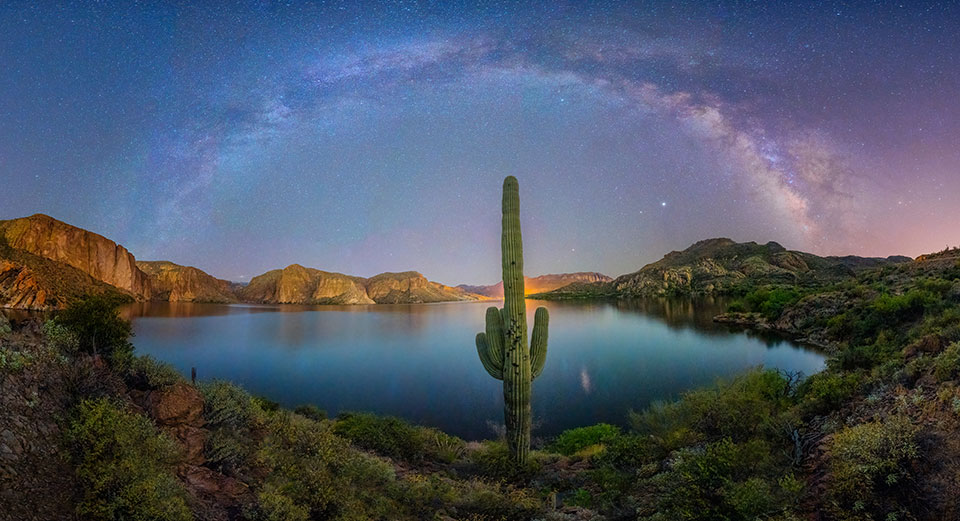
A lone saguaro guards the shore of Canyon Lake, northeast of the Phoenix area, as the Milky Way arches overhead. The glow behind the saguaro is from the lake’s developed area, which includes boat launches, a marina and a steamboat that offers sightseeing cruises.
Sean Parker
PANASONIC LUMIX S5, 15 SEC, F/2.8, ISO 6400, 15-30 MM LENS, MULTIPLE IMAGES STITCHED
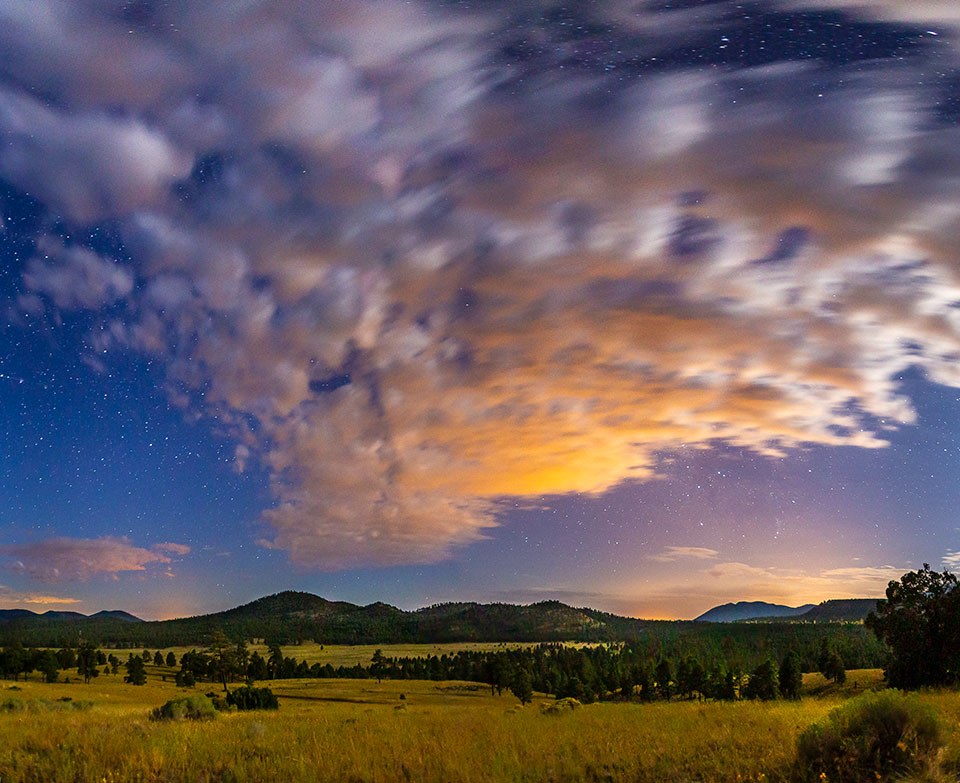
Clouds catch the day’s last light over a meadow in the Flagstaff area. Renowned for its pristine nighttime skies, Flagstaff was recognized in 2001 as the world’s first International Dark Sky Place, a designation now shared by several other Arizona sites.
Byron Neslen
CANON EOS 5D MARK III, 25 SEC, F/2.8, ISO 1600, 16 MM LENS
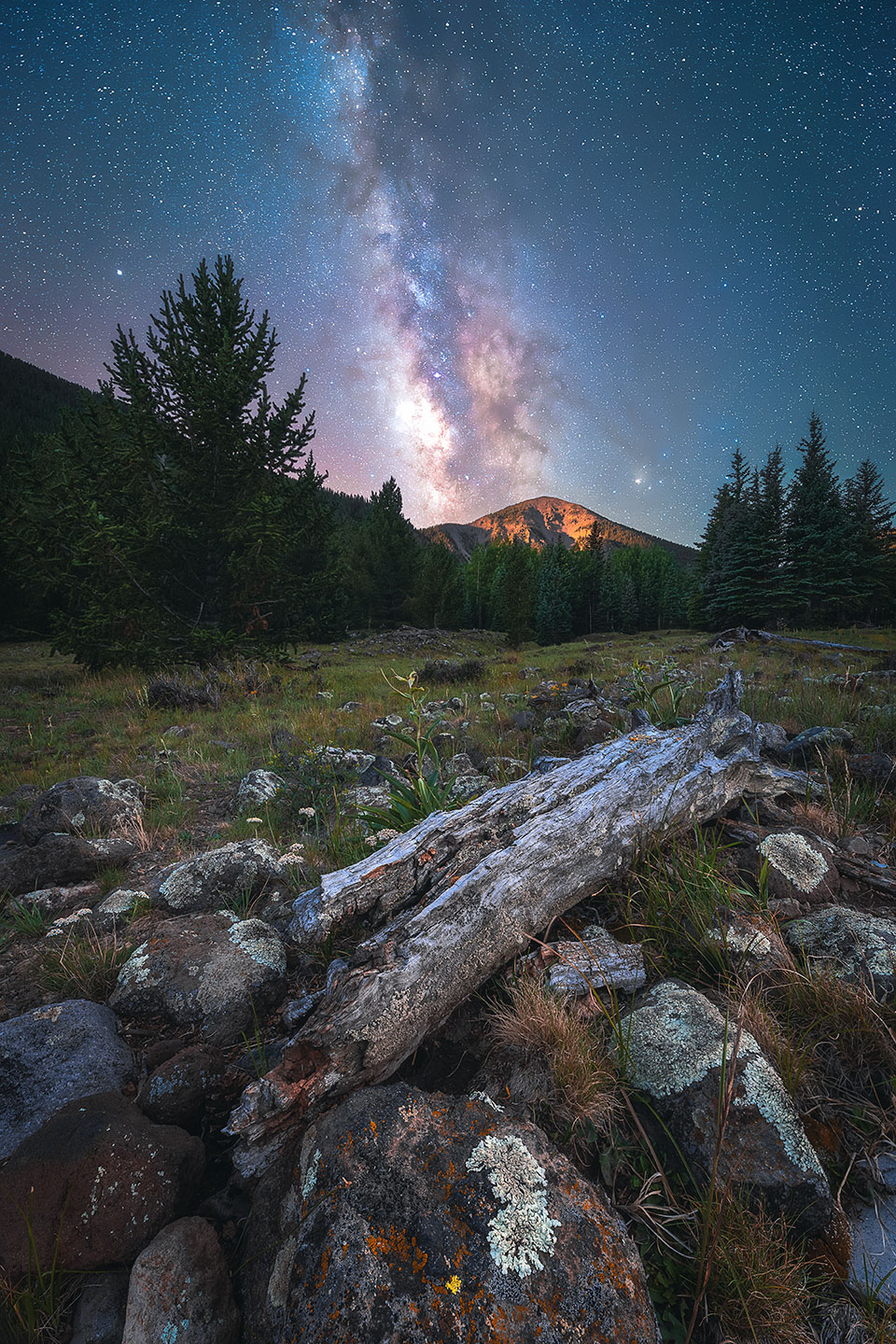
The Milky Way shines brightly in the sky above the Inner Basin of the San Francisco Peaks, near Flagstaff. In the distance, Fremont Peak reflects the light of the rising moon.
Mike Sanchez
SKY: NIKON D750, 13 SEC, F/3.5, ISO 25600, 14 MM LENS, 15 EXPOSURES STACKED; TREES AND MOUNTAIN: NIKON D750, 16 MIN, F/3.5, ISO 1600, 14 MM LENS, SINGLE EXPOSURE; FOREGROUND: NIKON D750, 10 SEC, F/11, ISO 200, 14 MM LENS, 3 EXPOSURES STACKED
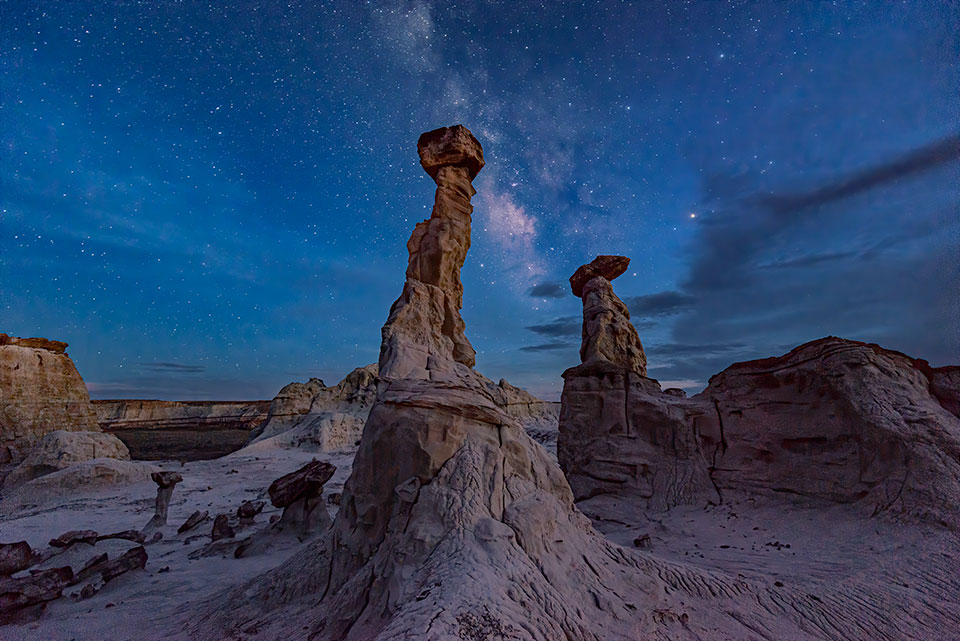
Hoodoos punctuate a serene nighttime view in Blue Canyon, on Hopi Tribe land in Northeastern Arizona. Visiting this isolated canyon, which is known for otherworldly formations and colorful rock layers, requires a Hopi guide.
Doug Koepsel
NIKON D600, 25 SEC, F/4.5, ISO 2000, 16 MM LENS
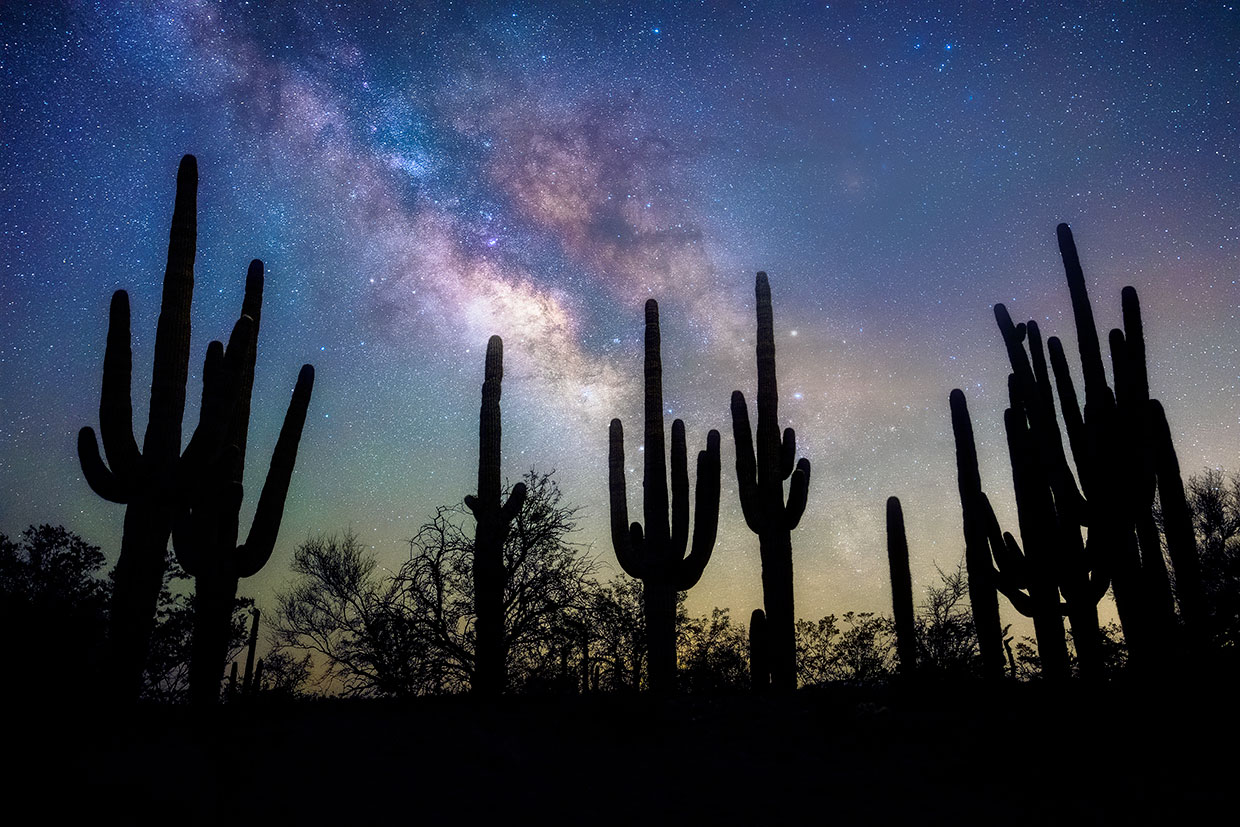
Tall saguaros anchor a nighttime view of the Milky Way galaxy near San Manuel, northeast of Tucson. At night, saguaros serve as roosts for woodpeckers and other birds, and bats pollinate the cactuses’ flowers.
Sean Parker
SONY ALPHA 7 III, 10 SEC, F/2.8, ISO 12800, 17-28 MM LENS
